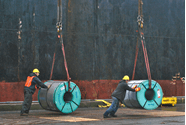Product
March 1, 2018
AGC: Construction Spending Flat in January; Section 232 Will Harm Infrastructure Plans
Written by Sandy Williams
Construction spending was unchanged from January compared to December, said the Associated General Contractors of America in its analysis of new government data.
“Construction spending in January showed a mixed pattern, with noteworthy increases in public outlays and single-family homebuilding balancing out declines in private nonresidential and multifamily investments,” said AGC Chief Economist Ken Simonson,
Construction spending in January essentially matched the upwardly revised December record level of $1.263 trillion at a seasonally adjusted annual rate. The January total exceeded the year-earlier level by 3.2 percent. For the month, private nonresidential construction spending rose 0.3 percent, private residential spending declined 1.5 percent, and public construction spending gained 1.8 percent. On a year-over-year basis, private residential construction spending increased 4.2 percent, private nonresidential spending slipped 1.1 percent, and public construction spending jumped 8.2 percent.
“The underlying trends appear to point to a recovery in manufacturing, pipeline and power construction among private nonresidential categories; strong private and public investment in airports and schools; and a flattening or weakening of office and multifamily spending,” said Simonson.
{loadposition reserved_message}
AGC officials urged the White House to avoid triggering a trade war by the imposition of tariffs on steel and aluminum. All construction categories “are threatened by the harmful actions under consideration regarding steel and aluminum,” said Simonson.
“Already, prices have jumped for lumber, steel and aluminum,” said Simonson. “Potential double-digit tariffs or import restrictions on steel and aluminum could wreck the budgets for numerous infrastructure projects and private nonresidential investments. In addition, any countermeasures taken by U.S. trading partners that are affected by these measures would harm U.S. exporters, transportation and logistics businesses, and ports, which would reduce demand for a variety of construction categories.”
“Making construction, infrastructure and development projects more expensive by imposing new trade barriers will do far more damage to the economy than any limited benefits new tariffs or quotas might provide,” said Stephen E. Sandherr, the association’s chief executive officer. “Worse, increasing the cost of construction will only undermine the president’s ambitions to rebuild the nation’s aging and over-burdened infrastructure.”







